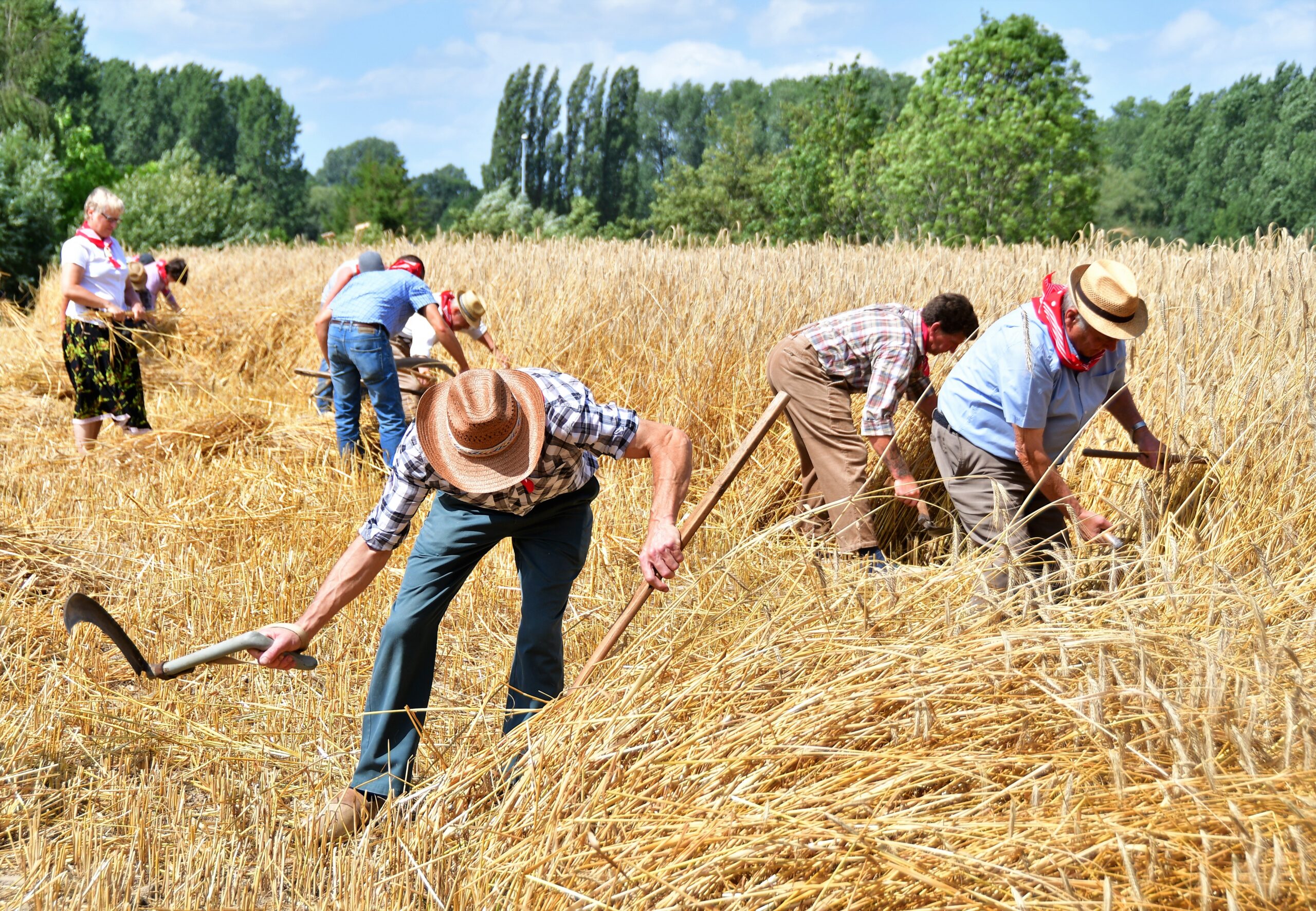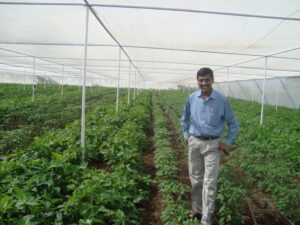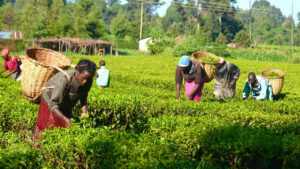Step into a world where fields flourish and nature’s rhythm pulses harmoniously with the delicate tasks of sustainable farming. It’s a realm where every seed sown, every crop harvested, and every animal nurtured captures the essence of balance, longevity, and environmental stewardship. Today, we uncover the secrets behind the art of sustainable farming and delve into the key practices that cultivate a thriving future for our planet. Join us on this odyssey as we explore the innovative techniques, the mesmerizing connection between man and land, and the incredible journey towards a greener, more sustainable world. Get ready to embark on an enlightening adventure into the realm of harvesting sustainability at its finest – where nature’s bounty meets human ingenuity!
Harvesting Sustainability: Key Practices for Sustainable Farming Revealed!
Discover the Secrets to a Thriving and Eco-Friendly Farming System
The Power of Crop Rotation
One of the fundamental practices for sustainable farming is crop rotation. By alternating the crops grown in the same field each year, farmers can prevent the depletion of nutrients in the soil, reduce the risk of pests and diseases, and break the cycle of weeds. This simple yet powerful technique not only enhances soil fertility but also improves the overall health of crops, leading to higher yields.
Embracing Natural Pest Control
Instead of relying on harmful chemicals, sustainable farmers harness the power of nature to control pests. Introducing beneficial insects and birds, such as ladybugs and barn owls, into the farm ecosystem helps maintain a balance and keeps harmful pests at bay. Additionally, companion planting, where certain plants are grown together to deter pests, acts as a natural defense mechanism. For instance, marigolds release chemicals that repel harmful nematodes, protecting sensitive crops like tomatoes.
Implementing Water Conservation Techniques
Efficient water management is vital for sustainable farming. To conserve water resources, farmers practice techniques like drip irrigation and rainwater harvesting. Drip irrigation provides water directly to the roots of plants, minimizing wastage, while rainwater harvesting collects and stores rainwater for future use. These methods not only reduce water consumption but also help prevent erosion and maintain healthy soil moisture levels, promoting optimal plant growth.
Example of Sustainable Farming Techniques
Technique
Benefits
Biochar Application
Increase soil fertility and nutrient retention.
Composting
Reduce waste, enrich soil, and reduce the need for synthetic fertilizers.
Agroforestry
Enhance biodiversity, reduce soil erosion, and provide shade for crops.
Harvesting Sustainability: Key Practices for Sustainable Farming Revealed!
Discover the Secrets to a Thriving and Eco-Friendly Farming System
The Power of Crop Rotation
One of the fundamental practices for sustainable farming is crop rotation. By alternating the crops grown in the same field each year, farmers can prevent the depletion of nutrients in the soil, reduce the risk of pests and diseases, and break the cycle of weeds. This simple yet powerful technique not only enhances soil fertility but also improves the overall health of crops, leading to higher yields.
Embracing Natural Pest Control
Instead of relying on harmful chemicals, sustainable farmers harness the power of nature to control pests. Introducing beneficial insects and birds, such as ladybugs and barn owls, into the farm ecosystem helps maintain a balance and keeps harmful pests at bay. Additionally, companion planting, where certain plants are grown together to deter pests, acts as a natural defense mechanism. For instance, marigolds release chemicals that repel harmful nematodes, protecting sensitive crops like tomatoes.
Implementing Water Conservation Techniques
Efficient water management is vital for sustainable farming. To conserve water resources, farmers practice techniques like drip irrigation and rainwater harvesting. Drip irrigation provides water directly to the roots of plants, minimizing wastage, while rainwater harvesting collects and stores rainwater for future use. These methods not only reduce water consumption but also help prevent erosion and maintain healthy soil moisture levels, promoting optimal plant growth.
| Technique | Benefits |
|---|---|
| Biochar Application | Increase soil fertility and nutrient retention. |
| Composting | Reduce waste, enrich soil, and reduce the need for synthetic fertilizers. |
| Agroforestry | Enhance biodiversity, reduce soil erosion, and provide shade for crops. |
%%video_title%%
Harvesting Sustainability: Key Practices for Sustainable Farming Revealed!
As we strive towards a greener future, sustainable farming practices have taken the center stage. In this video, we uncover the crucial practices that pave the way for a more sustainable and eco-friendly approach to agriculture. By incorporating these methods into our farming systems, we not only protect the environment but also enhance food production and ensure the well-being of our communities.
1. Crop Rotation:
Crop rotation is an age-old technique that has been used for centuries, and it continues to be a cornerstone of sustainable farming. By rotating the types of crops grown, farmers can effectively break the cycle of pests and diseases, reduce soil erosion, and enhance soil fertility. The rotation allows for the natural restoration of nutrients, which leads to healthier plants and higher yields. This practice also plays a vital role in weed management, as the rotation disrupts the growth patterns of weeds, minimizing the need for chemical herbicides.
2. Water Conservation:
With water resources becoming scarcer, water conservation is crucial for sustainable agriculture. Farmers are adopting various techniques to minimize water usage, such as drip irrigation and precision farming. Drip irrigation involves delivering water directly to the roots of the plants, reducing evaporation and optimizing water usage. Precision farming utilizes advanced technology, including soil moisture sensors and satellite imagery, to ensure optimal watering schedules. By embracing these practices, farmers maximize water efficiency and minimize runoff, contributing to a more sustainable water supply for future generations.
3. Integrated Pest Management (IPM):
Integrated Pest Management is a holistic approach to pest control that emphasizes prevention, monitoring, and the use of natural methods. This sustainable practice promotes the use of beneficial insects, such as ladybugs, to control harmful pests, reducing reliance on chemical pesticides. By implementing IPM strategies, farmers can maintain a balance between pest control and the preservation of beneficial organisms. This approach not only protects the environment and human health but also helps sustain the natural biodiversity essential for a thriving ecosystem.
| Technique | Benefits |
|---|---|
| Drip Irrigation | Optimized water usage, reduced evaporation |
| Crop Rotation | Breaks pest and disease cycles, enhances soil fertility |
| Integrated Pest Management | Reduces reliance on chemical pesticides, preserves natural biodiversity |
By adopting these sustainable farming practices, we can pave the way for a healthier and more environmentally conscious agricultural sector. It’s essential for us to work hand in hand towards nurturing our planet while ensuring food security for future generations. Let’s embrace these key practices and make sustainability a way of life for all.
Have you ever wondered what goes on behind the scenes of a professional cooking show? In this exclusive video, we take you on a journey through the making of a mouth-watering dish that will leave you craving for more. From the selection of fresh ingredients to the final plating, every step is meticulously captured to bring you an insider’s look at the culinary artistry that takes place in the kitchen.
Harvesting Sustainability: Key Practices for Sustainable Farming Revealed!
Welcome to an enlightening behind-the-scenes journey into the world of sustainable farming. In this exclusive video, we invite you to witness the remarkable practices employed by our dedicated farmers, who tirelessly work towards producing food that is not only delicious but also environmentally friendly. Join us as we unveil the secrets behind sustainable farming and explore the careful measures taken to preserve our precious resources.
A Symphony of Nature’s Bounty
Our journey begins with the careful selection of fresh ingredients – the very foundation of any culinary masterpiece. From verdant fields to bustling marketplaces, our farmers painstakingly handpick the finest produce, ensuring the perfect balance of flavor, texture, and nutrition. As you venture further, you’ll discover how sustainable farming methods such as crop rotation, companion planting, and organic fertilizers are implemented to enhance the quality and longevity of our harvests.
A Mindful Dance with Mother Earth
Sustainable farming is an intricate dance with nature, in which farmers strive to nurture the land while embracing its natural ecosystems. Witness the delicate interplay of beneficial insects and native plants, as they work in harmony to control pests and enhance soil fertility. Our farmers utilize advanced technologies and innovative irrigation systems to minimize water usage and preserve this precious resource. From regenerative agriculture to smart pest management, each step painstakingly taken ensures a bountiful future for generations to come.
A Greener Tomorrow
| Principle | Description | Impact |
|---|---|---|
| Composting | Transforming organic waste into nutrient-rich compost to reduce reliance on synthetic fertilizers | Decreases greenhouse gas emissions and enhances soil structure |
| Agroforestry | Integrating trees into farming systems to improve soil fertility and provide habitats for diverse flora and fauna | Preserves biodiversity and helps combat climate change |
| Water Conservation | Using drip irrigation, rainwater harvesting, and efficient irrigation techniques to minimize water waste | Reduces water usage and protects local water sources |
As you delve deeper into our fascinating exploration of sustainable farming practices, you’ll soon realize that this journey is not just about today’s meal but also about creating a greener and healthier tomorrow. Join us on this extraordinary quest to appreciate the dedication and ingenuity of our remarkable farmers, ensuring that we all play a part in preserving our planet’s abundance for generations to come.
Join renowned chef, Jane Smith, as she effortlessly creates a culinary masterpiece that will dazzle your taste buds. With her expert guidance and years of experience, she shares invaluable tips and tricks that will elevate your cooking skills to the next level. Whether you’re a seasoned chef or just a food enthusiast, this behind-the-scenes video is a treat you don’t want to miss.
Discover the secrets of sustainable farming and learn how to make a positive impact on our environment with our insightful video series, “Harvesting Sustainability: Key Practices for Sustainable Farming Revealed!” Join renowned chef, Jane Smith, as she takes us on a journey through the fields of organic farms, showcasing the incredible practices that ensure a bountiful harvest while preserving our planet.
In this episode, Chef Jane Smith introduces us to the concept of regenerative farming, a groundbreaking approach that focuses on restoring soil health, biodiversity, and ecological balance. With her expert guidance, we delve into the techniques used by sustainable farmers to nurture the earth and produce crops that are not only delicious but also environmentally friendly. From cover cropping to rotational grazing, you’ll discover the innovative practices that promote healthier ecosystems and farming communities.
Join Chef Jane Smith as she meets local farmers who have implemented sustainable practices into their operations. Through interviews and testimonials, you’ll gain a deeper understanding of the challenges they face and the remarkable solutions they’ve discovered. With their stories as inspiration, you’ll explore the benefits of sustainable agriculture, from reduced carbon emissions to improved soil quality. This captivating video series will not only ignite your passion for sustainable farming but also empower you to make a difference in your own kitchen and community.
Indulge yourself in the thrilling world of gastronomy as we unveil the secrets that make a cooking show truly extraordinary. Get inspired by the sheer dedication, precision, and creativity that goes into every minute detail. Don’t just watch a cooking show – immerse yourself in the process and discover the magic that happens before the dish is presented to your television screen. Prepare to be amazed!
Step into the captivating world of sustainable farming and uncover the key practices that bring nature’s bounty to your table. Join us on a journey of discovery as we delve into the intricate web of techniques and strategies employed by farmers committed to the principles of sustainability. Experience firsthand how this harmonious relationship between humans and the environment yields high-quality, organic produce that nourishes both body and soul.
At the heart of sustainable farming lies a deep respect for the land and its natural processes. Learn about the art of crop rotation, which replenishes nutrients in the soil and mitigates the risk of pests and diseases. Explore the wonders of regenerative agriculture, where the focus shifts from merely sustaining the land to actively restoring its vitality. Witness the synergy between farm animals and crops, as livestock graze on cover crops, enriching the soil with their manure. These practices not only protect the environment but also result in tastier, healthier food for your family.
Discover the power of biodiversity in maintaining the delicate balance of ecosystems. Witness how intercropping enhances pest management by creating a natural diversity of plants that confuse and deter hungry insects. Hear from farmers who embrace agroforestry, a method that combines trees and crops to create resilient, sustainable systems. From polycultures to companion planting, these innovative approaches will leave you in awe of both the complexity and simplicity of nature’s grand design.



